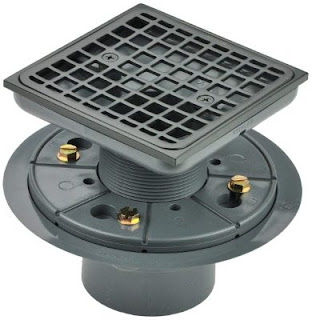When you are arranging a shower drain for your home or investment property, one decision that appears to be little yet is really significant rotates around what drain to use in the shower. Here are some tips dependent on experience choosing up from structure literally many showers.
Point Drain or Linear Drain
There are more shower drains accessible than you can tally, yet they all truly fall into two kinds-point drains and linear shower drain reviews. Point drains are most normal and are what we are used to finding in showers. They are normally situated amidst the shower floor, and the floor is inclined from all bearings down to the drain.
The shower floor is extremely a tenderly slanted channel that coordinates the majority of the water into this drain. One tip is to search for a square drain grind, instead of around one. Tiles are square, so your shower floor will look better with a square drain, and the installer won't need to attempt to make round cuts on the square tile.
A linear drain, as the name recommends, is long and thin. These drains add a component of style to the shower and have turned out to be considerably more popular in a previous couple of years. They might be situated amidst the floor however are most usually put along with one mass of the shower. The structure and arrangement of these drains mean the whole shower floor slants delicately and uniformly toward the drain. No more channel. Linear drains come in a wide range of lengths, up to up to 72".
It's essential to realize that the two kinds of drains remove the water with equivalent proficiency. Except if you have an uncommonly enormous measure of water in your shower, either type will work. Much of the time, a point drain will cost not exactly a linear drain.
Huge Tiles or Small Tiles
The most significant change that originates from choosing a linear drain is that you can use bigger tiles on the shower floor. Because the whole floor is equally inclined one way, any size tile can be introduced on the floor. If you need little tiles that is fine, yet you can likewise use bigger tiles.
Numerous property holders like this alternative because they can use similar tiles on the shower floor as they have in the remainder of the washroom. From a planning point of view, it makes a progressively consistent look and can help make little spaces appear to be bigger.
Because of the channel required for a point drain, littler tiles must be used on the shower floor. As a rule, it is not prescribed to use anything a lot bigger than 4" x 4" tiles with a point drain. The tiles need to sit level on the floor and you can't put a huge level tile over a story that has more than one incline. Numerous individuals like to complement the shower floor with little tiles and make it appear to be unique than the remainder of the washroom, so the point drain settles on a good decision.
Stylistic layout Drain or Invisible Drain
Whether the decision is to go with a point drain or linear drain, the last advance is to choose the style and finish of the mesh. This is the piece of the drain that is seen and you need it to fit the style of the restroom. I, by and large, suggest choosing a finish that matches the remainder of the apparatuses in the washroom so everything integrates.
So if your taps and shower head are all in chrome, then your mesh should be too to finish the look. With respect to style, that is an individual decision. There are numerous choices accessible and we truly like the ongoing additions Schluter has turned out with as they can add a bit of style to the shower floor, and definitely emerge from your progressively traditional meshes.
Another truly smooth choice is to use what's known as a tileable mesh. For this situation, a similar tile that is used on the shower floor clings to a strong surface on the highest point of the mesh, and the water drains essentially around the edges of the tile mesh. The mesh territory mixes in flawlessly with the remainder of the shower floor and turns out to be about invisible.

Comments
Post a Comment